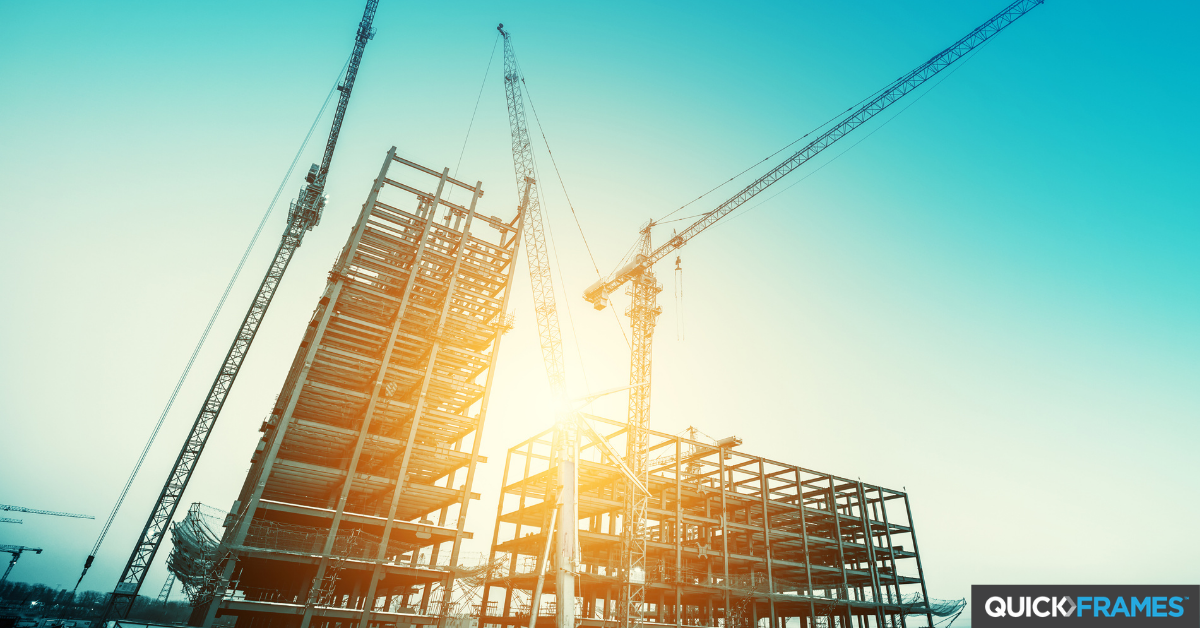By Bob Hasulak, Partner & Director of Operations, QuickFrames
We’re always on the lookout for industry insights, so were eager to check out Deloitte’s 2021 Engineering & Construction Industry Outlook overview. It’s safe to say we weren’t disappointed. The report shares some sweeping trends in engineering and construction, and it also identifies areas of opportunity for improvement and growth including engineering prefabrication. Here are the key takeaways.
The Highs & Lows of 2020
Deloitte’s report started by recapping how the construction industry entered 2020 on a high note, responsible for the addition of “more than $900 billion to the US economy in the first quarter,” which was the highest level since the recession of 2008. Furthermore, the construction industry “employed 7.64 million people in February 2020,” also its greatest employment levels since 2008.
While this sounds like sunshine and roses, we all know how the story went from there. COVID-19 hit, and there were immediate, major losses and ongoing recidivism (to the tune of $60.9 billion in industry GDP). But, not all construction and engineering companies suffered dramatically. In fact, as Deloitte’s report points out, many were prepared for the shockwaves of the pandemic after having learned how to navigate the tough economic times of 2008.
The rest of the year proved to be mixed for the industry, with some organizations weathering the storm while some took major losses or even shuttered completely. No one will remember 2020 as a wonderful year; that’s a given. But the losses and tragedies of the year did give us some of the most powerful lessons we’ve ever learned.
Discovering Operational Efficiencies: Engineering Prefabrication
In order to come back from the challenges of last year, and drive growth once more, Deloitte recommends a few things. First, engineering and construction companies “should consider several ways to create long-term efficiencies and other competitive advantages in 2021.” Second, the report highlighted that “one option is to save costs via modularization and prefabrication design.”
Construction companies of all types and sizes have been adopting prefabrication and modularization over the years, but it’s been at a relatively slow pace. Last year, the necessity of working more efficiently and cost-effectively became even more important as profit margins eroded and companies had to adapt to unstable circumstances. This laid the foundation for faster adoption of these practices industry-wide.
Deloitte’s midyear report (seen here) went into detail about the potential cost savings that prefabrication and pre-assembly could bring to projects. The researchers advised that these types of products not only help firms save on labor costs but “might also ensure better quality and shorten the project schedule with less labor required on-site.” They went on to note that “this can avoid rework and help improve safety as well.”
There was an emphasis on the fact that shifting away from the status quo and toward more prefabricated products (like QuickFrames roof support frames) would be an important strategy for construction and engineering companies in 2021. These solutions are expected to help them save costs, improve efficiencies and shorten project schedules, all of which are needed now more than ever.
The Bright Side of 2021
We loved that Deloitte’s industry outlook reinforced the value of solutions like ours, and one of our personal favorite parts of the report was how it ended. The author concluded by saying “there are reasons to be optimistic for the future” of the industry. I don’t know about you, but we were all very glad for that positive news.
If you’d like to take Deloitte’s advice and explore the benefits of prefabricated products like QuickFrames pre-engineered floor framing system solutions and rooftop equipment supports, we’d love to answer your questions and get you a quote. We’re excited to be part of the “clear path forward” in 2021 for our friends and colleagues in construction and engineering.


